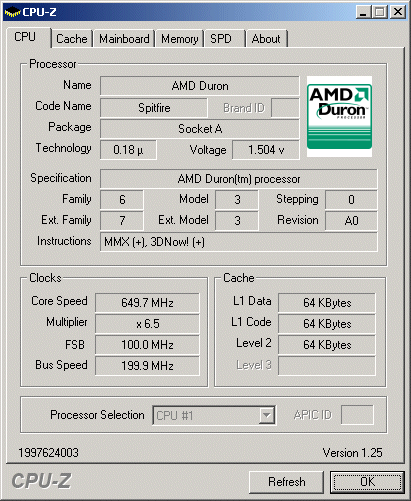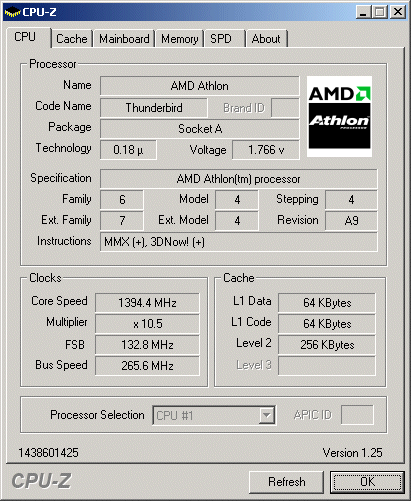The Mother of All CPU Charts Part 2
Socket A: June 2000 To Today
| Athlon 650 to 1400 | June 2000 to June 2001 |
| Duron 600 to 950 | June 2000 to June 2001 |
| Duron 900 to 1300 | May 2001 to January 2002 |
| AthlonXP 1500+ to 2100+ | October 2001 to March 2002 |
| AthlonXP 1700+ to 2100+ | April 2002 to June 2002 |
| AthlonXP 1700+ to 2800+ | June 2002 to October 2002 |
| AthlonXP 2500+ to 3200+ | January 2003 to May 2003 |
| Sempron 2200+ to 3000+ | June 2004 |
With the introduction of Socket 462 - also known as Socket A - in 2000, AMD established a long distance runner. Ultimately, this platform is still in use in discount systems. But no other platform has impacted the market as heavily as Socket 462.

Many users still stand by this socket platform even though performance is no longer in keeping with the times. But everything in its proper order: the classic Athlon Thunderbird was manufactured with an 180-nm process and supplied with a ceramic package. With a heat loss of up to 72 watts, it demanded especially good cooling.

At this time, THG began its comprehensive comparisons of coolers, and subsequently countless small makers crowded the market and got a whiff of good business - which, ultimately, they too shared in. AMD, VIA, SiS and ALI represented the chipset's manufacturing base. Later, ATI and NVIDIA joined them. This made the offerings for this socket particularly broad.
The introduction of the KT133 chipset from VIA, made it possible to use SD-RAM PC133, which allowed a data rate of up to 1 GB/s to be reached. There were some initial experiments with the virtual channel protocol from VIA, but except for several press samples, the memory never caught on in the mass market. DDR memory was introduced to the market at the same time as the AMD760. Thus began the wait for the AthlonXP.
The Duron with the Morgan core was the first to have SSE support. But this was still manufactured with the "old" 180-nm process and had a heat loss of up to 60 watts.
The new Athlon was presented completely retreaded to an enthusiastic clientele and given the name "AthlonXP", which stands for extended performance. The die was reduced to 130 nm. At the same time, AMD took its departure from the ceramic case and started to rely on an organic medium. There was also an implementation of SSE expansions.
Stay on the Cutting Edge
Join the experts who read Tom's Hardware for the inside track on enthusiast PC tech news — and have for over 25 years. We'll send breaking news and in-depth reviews of CPUs, GPUs, AI, maker hardware and more straight to your inbox.
Current page: Socket A: June 2000 To Today
Prev Page AMD Processors From March 1994 To December 2004 Next Page Socket A: June 2000 To Today, ContinuedTom's Hardware's dedicated news crew consists of both freelancers and staff with decades of experience reporting on the latest developments in CPUs, GPUs, super computing, Raspberry Pis and more.
Most Popular


